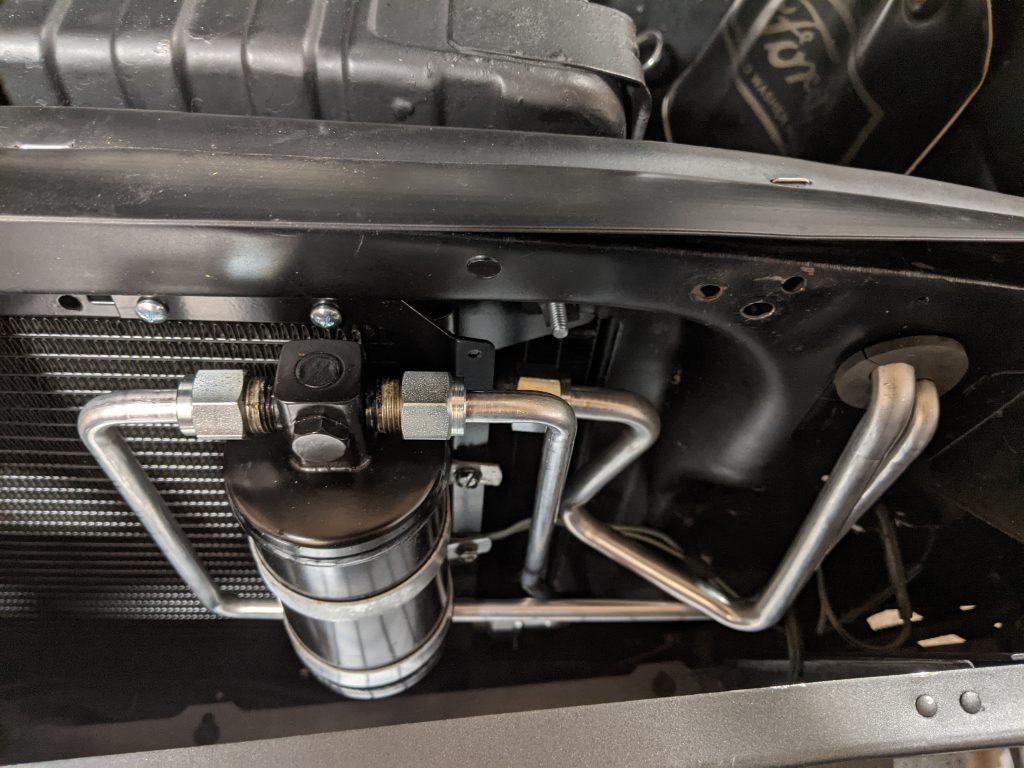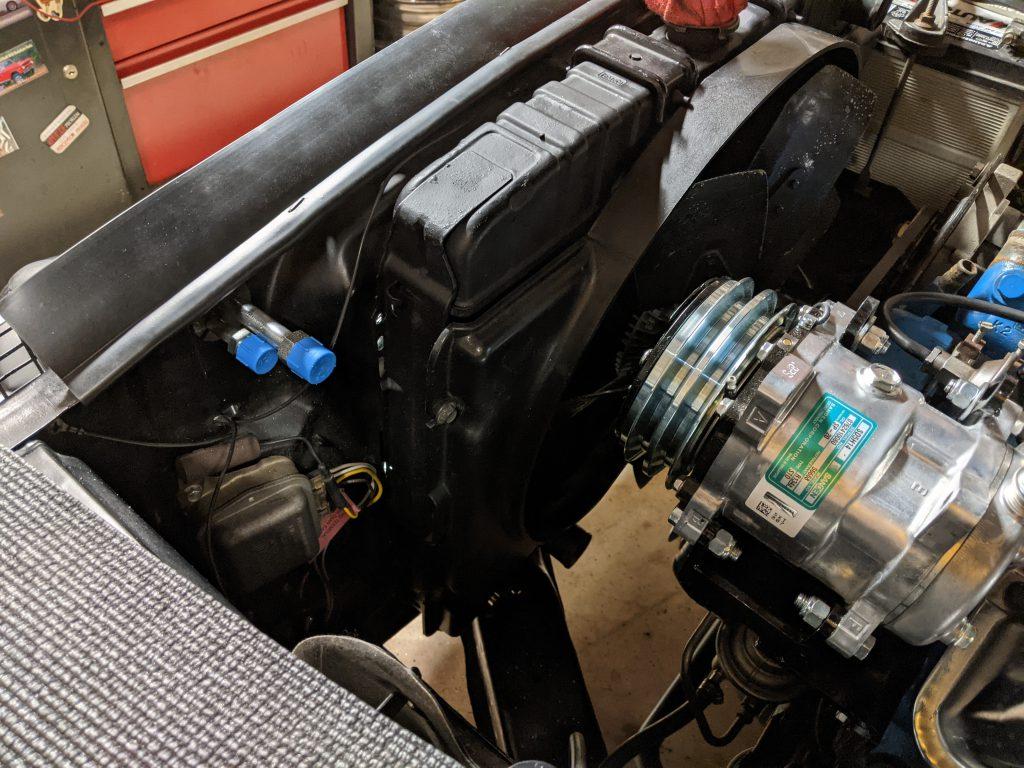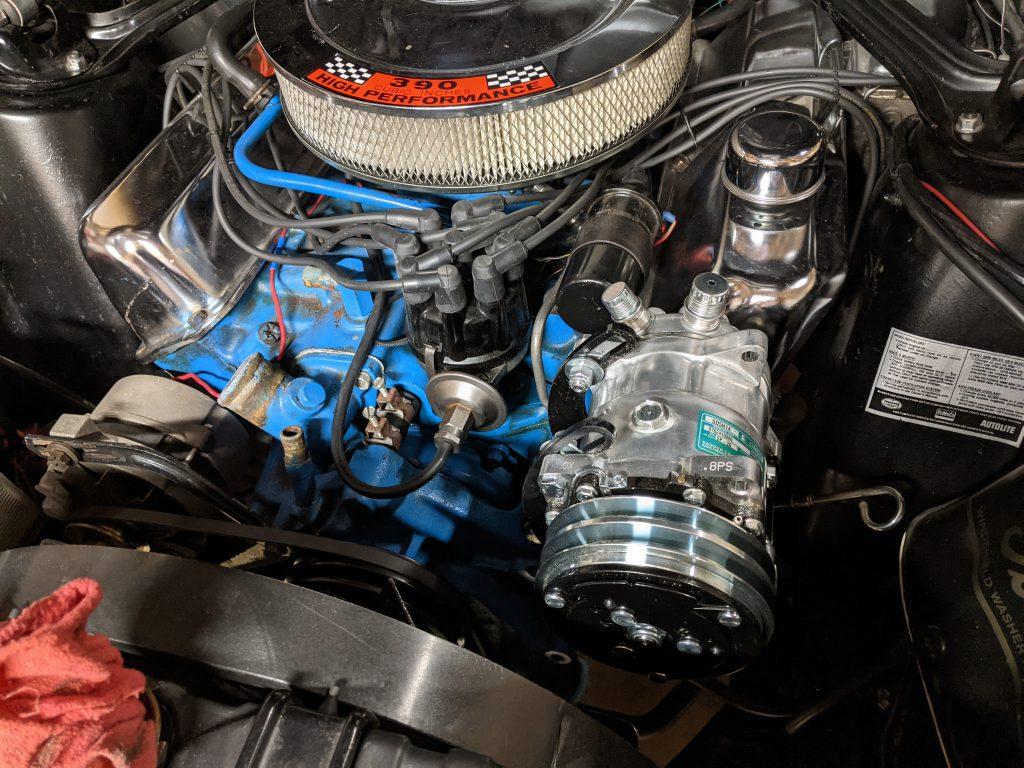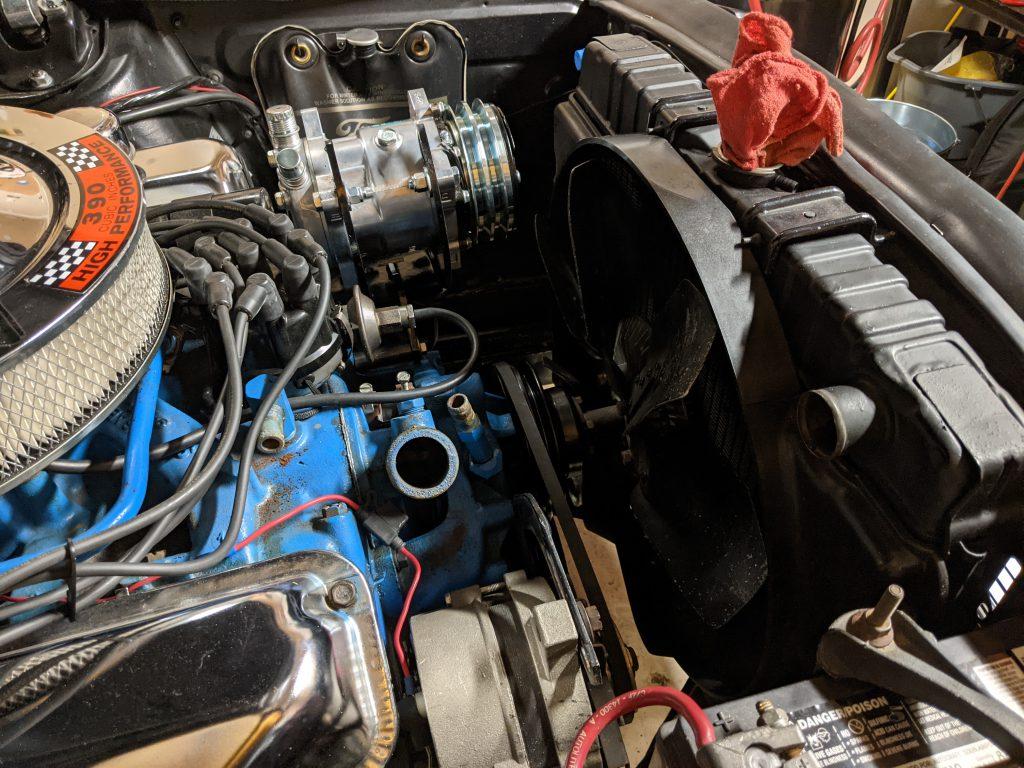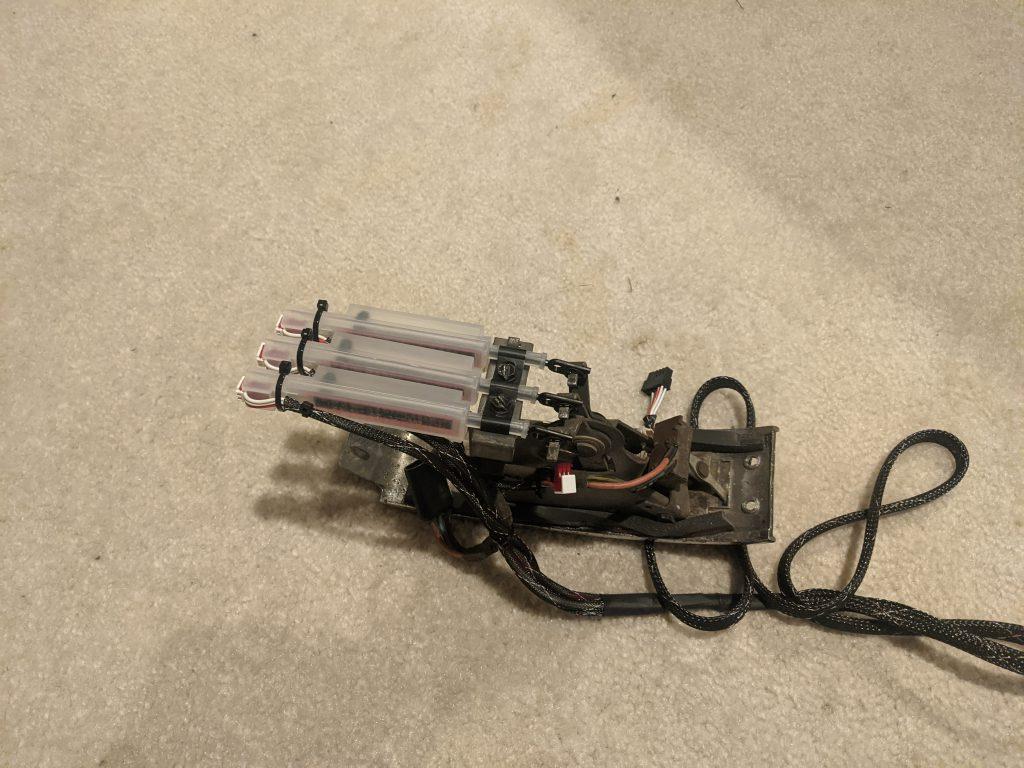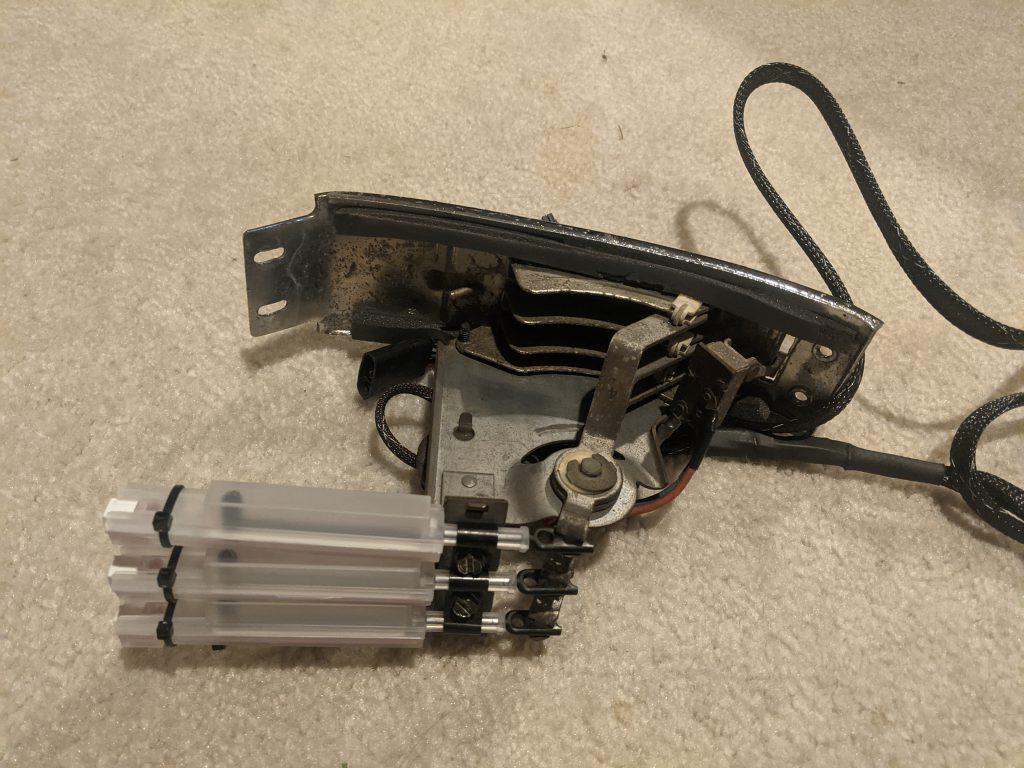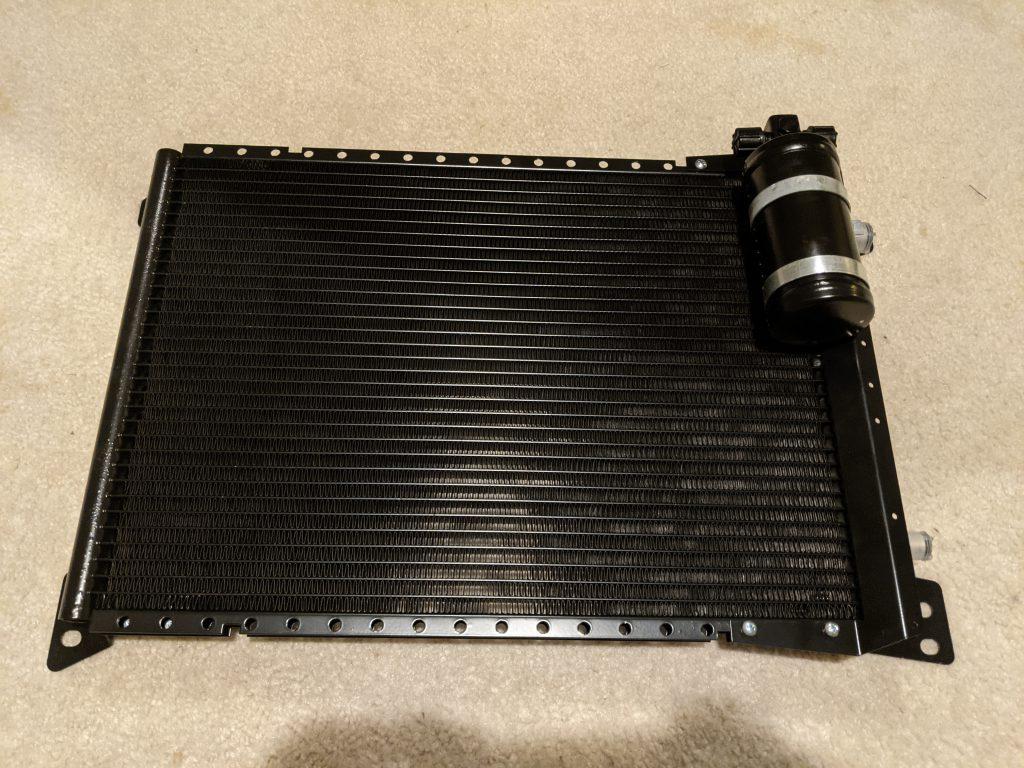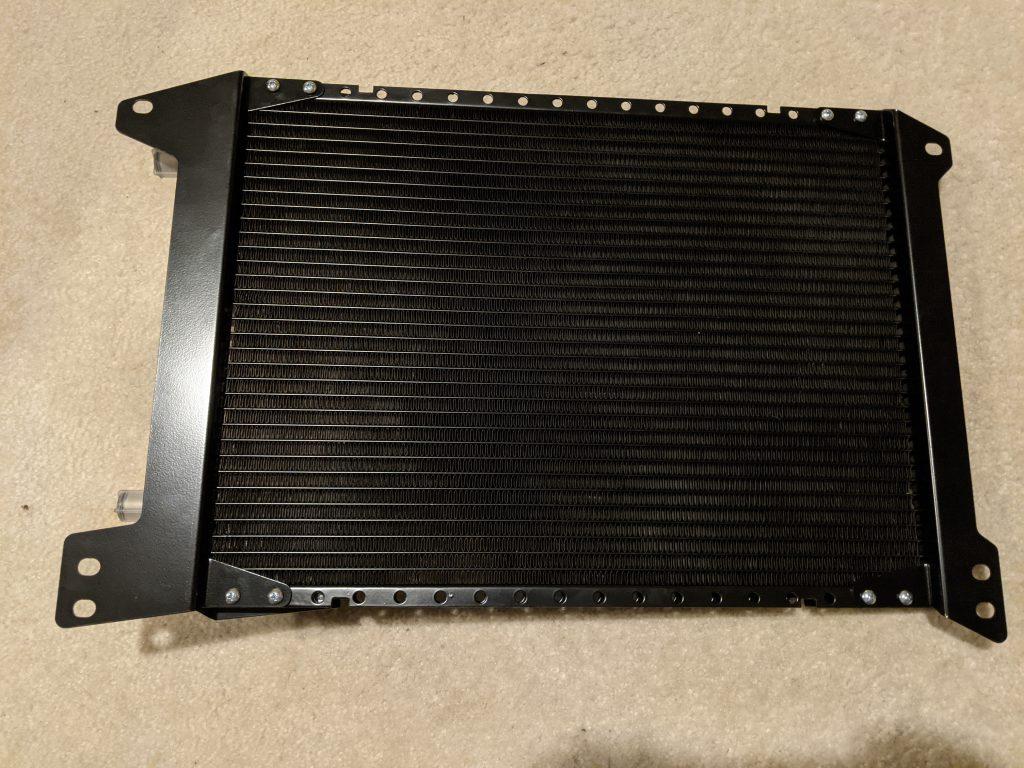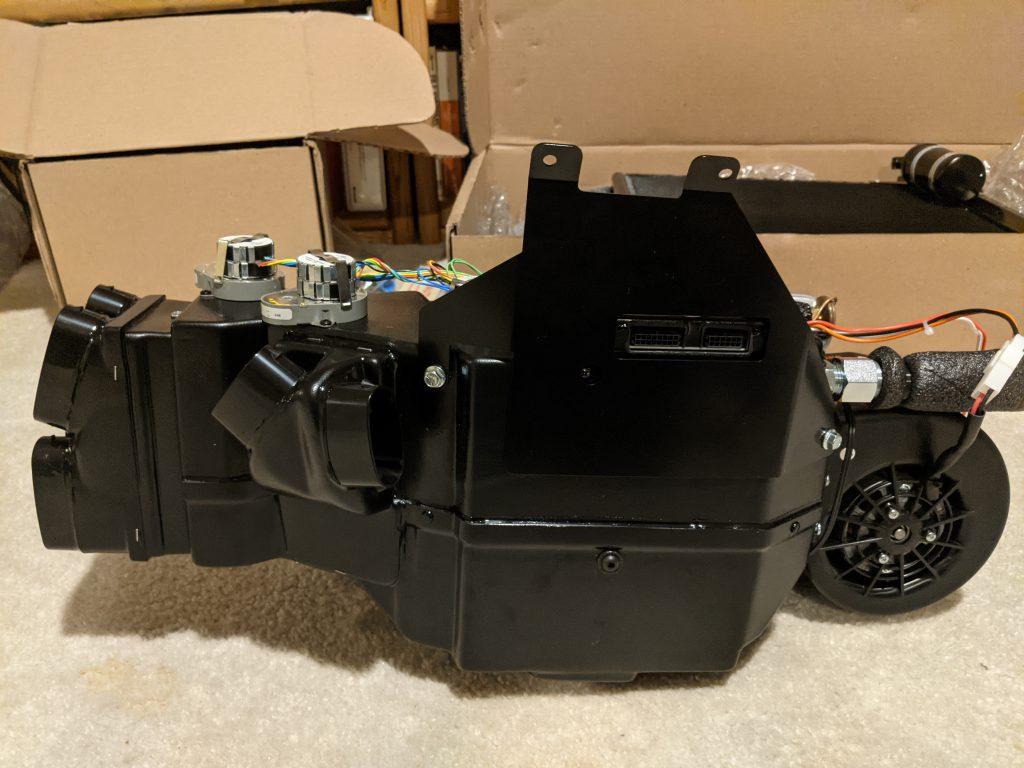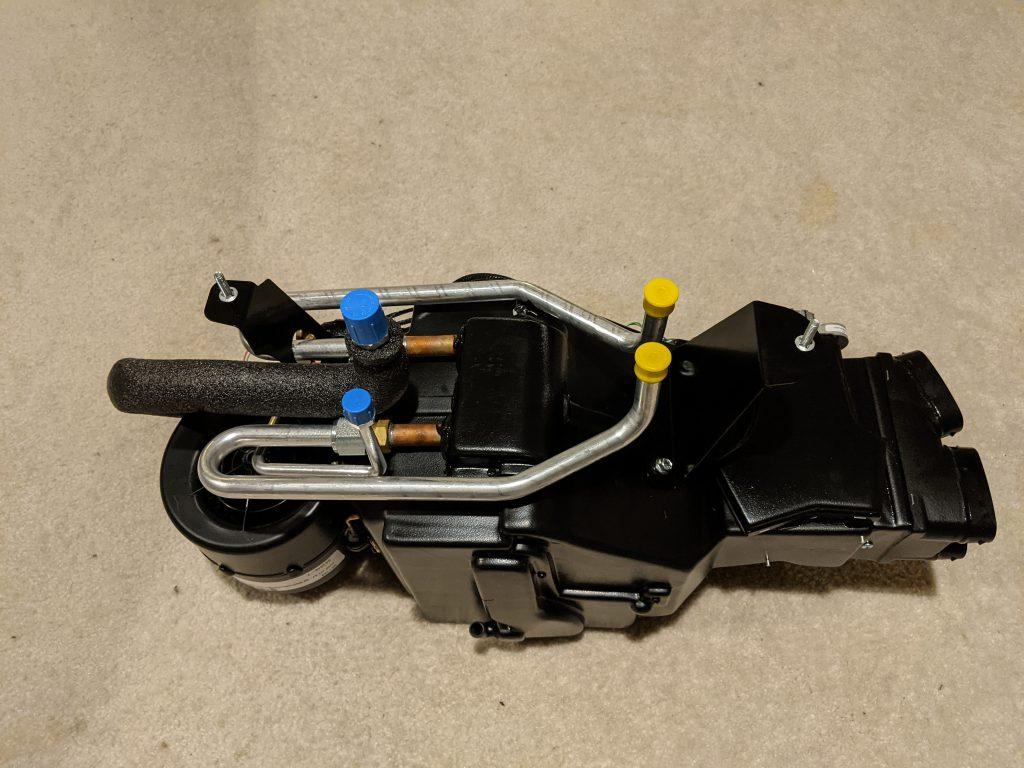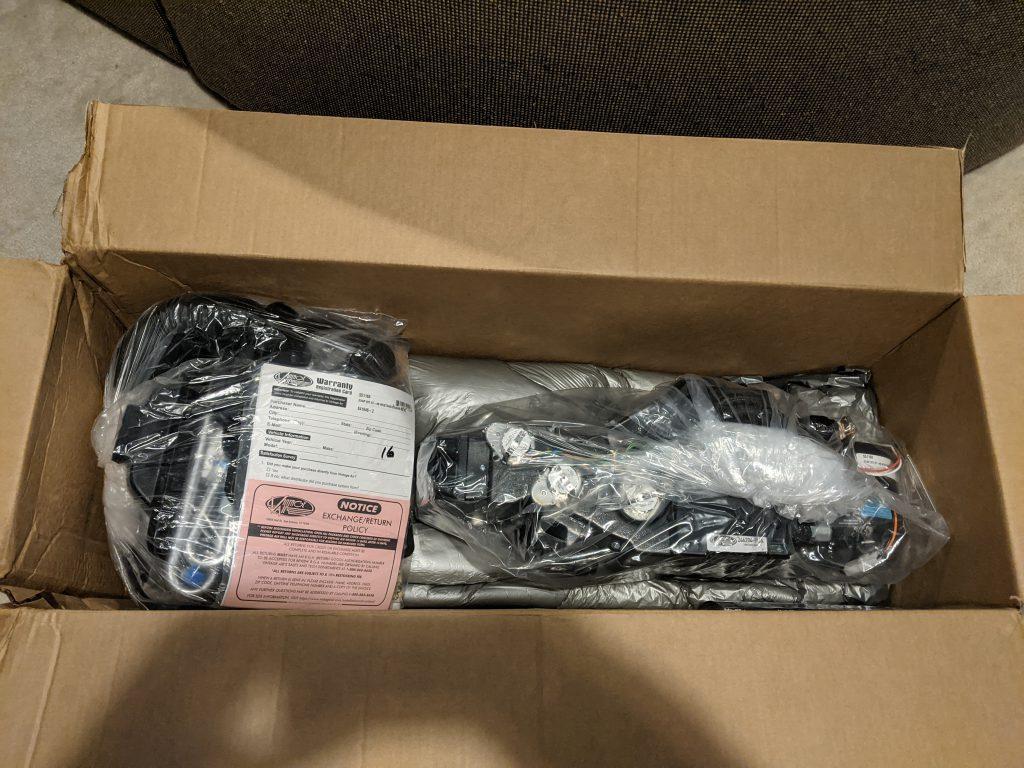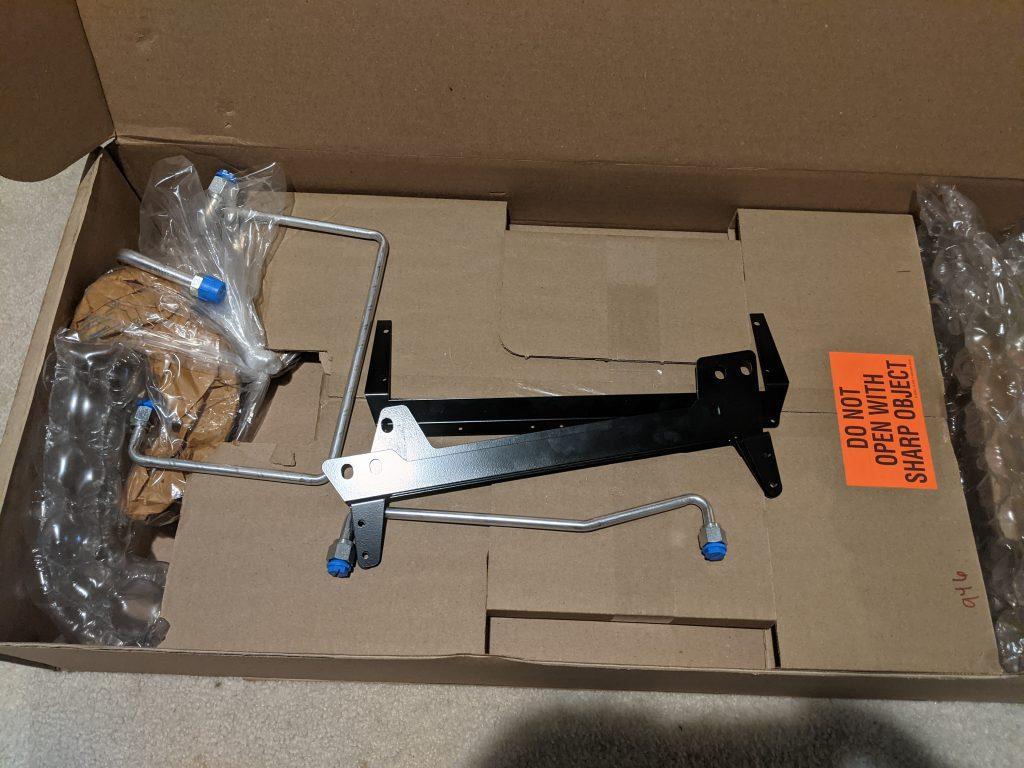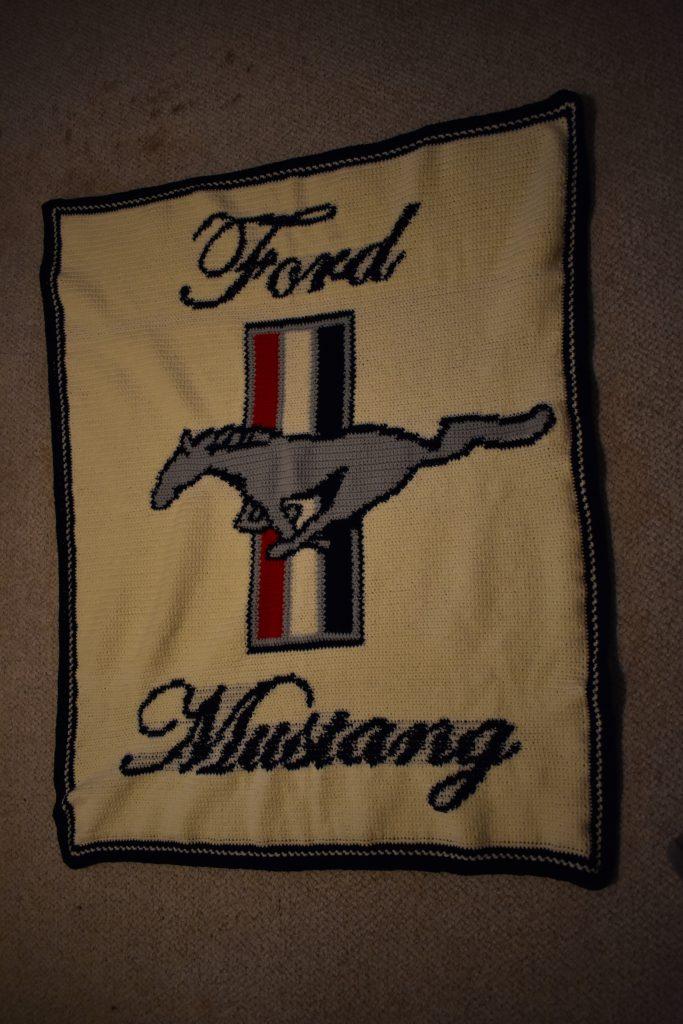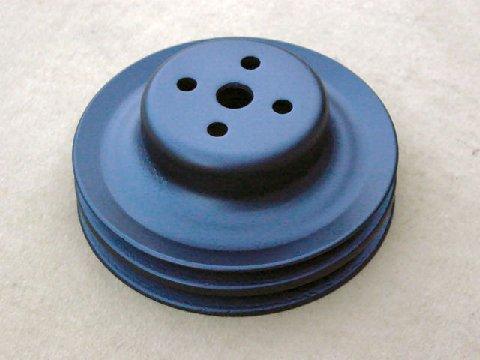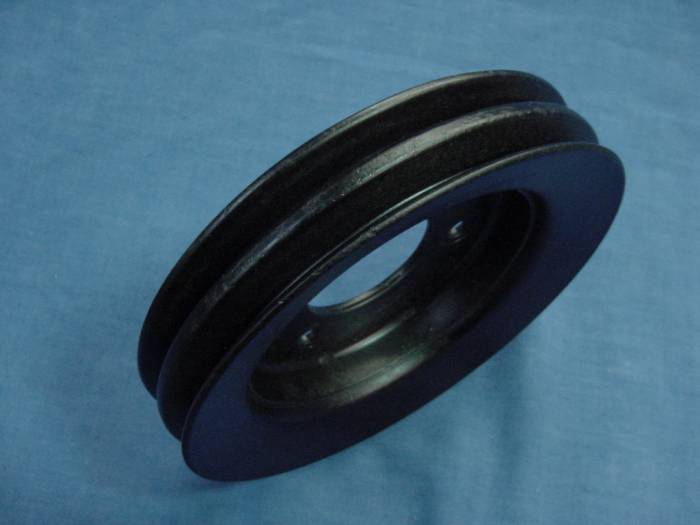One important item that is not included in the Vintage Air A/C kit is a new fan belt to drive the compressor. This kind of makes some sense since the belt length depends on a number of variables and there are many possible combinations of engines, accessories, and pulley sizes. Since I changed my pulley sizes when I swapped to the two sheave pulleys on the crankshaft and water pump, I was concerned that in addition to the A/C compressor fan belt, the alternator fan belt size would change as well.
For my first step I tried installing the original alternator fan belt back on the alternator, water pump, and crankshaft pulleys. As luck would have it the old belt still fit. I was fortunate on that one. Now to work on finding the correct A/C compressor belt. This time I wasn’t quite so lucky.
I had a spare alternator belt so I tried it on the A/C compressor just for grins. It was way too short, which I expected. Looking through the installation instructions for the compressor, Vintage Air recommended a 53 inch belt. I used a tape measure and ran it around the pulleys and got a measurement of just over 53 inches. Based on this information I ordered a Gates 7525 fan belt, which has an outside circumference of 53.32 inches and an effective length of 52.5 inches. After the belt arrived I test fitted it only to learn that it was quite a bit too long. Strike one.
Next I ordered a Gates 7512 belt, which has an outer circumference of 51.82 inches and an effective length of 51 inches. When I tried this belt it almost fit around the pulleys, but was just a bit too short. Strike two.
Now I was faced with a decision. There were two belts in between the 7525 and 7512 that might possibly fit. I could order the Gates 7516 with an outer circumference of 52.32 inches and an effective length of 51.5 inches. Or I could go a little longer with the Gates 7520 with an outer circumference of 52.82 inches and an effective length of 52 inches. I rolled the dice and ordered the smaller 7516 belt.
When the belt finally arrived I rushed out to the garage for a test fit. The belt was long enough to go around the crankshaft, water pump, and A/C compressor pulleys with enough adjustment in the compressor mounting bracket to tighten it up. So this time I ordered the correct belt. And it only took me three tries to get my measurements correct.
I believe that completes sourcing the last item that was not included with the Vintage Air kit. I still need to locate an A/C shop that can crimp on the ends of the A/C hoses from the kit. And I need to either get a vacuum pump for testing and charging the system or have a shop handle that for me. But first I just need some warmer weather so I can get back to work on the installation.

